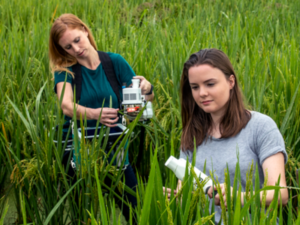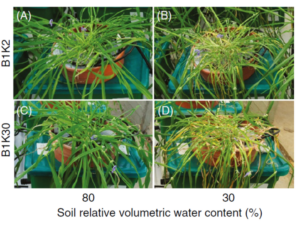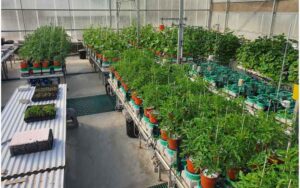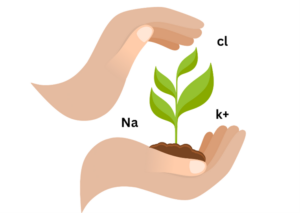Plant Phenomics is an interdisciplinary field that focuses on the measurement, analysis, and interpretation of plant traits at the whole-plant level. It encompasses various techniques and methodologies to study the complex interaction between genes, environment, and the development of plants. Plant Phenomics plays a crucial role in advancing our understanding of plant growth, development, and responses to environmental changes, with applications in agriculture, breeding, and biotechnology. This article delves into the world of plant Phenomics, exploring its significance, methodologies, and potential implications.
Understanding plant phenotypes, which are the observable characteristics of plants, is essential for enhancing crop productivity, yield, and resilience to various stresses. By studying the phenome (the collective phenotypic traits) of plants, researchers can identify genetic markers associated with desired traits and develop improved crop varieties. Plant Phenomics also helps in studying the effects of environmental factors, such as temperature, water availability, and nutrient levels, on plant growth and development.

Before we dive into plant Phenomics, lest expend about plant biology
Plant biology, also known as botany, is the scientific study of plants—living organisms that play a vital role in the Earth’s ecosystems. Plant biology encompasses a wide range of topics, from understanding the structure and function of plants at the cellular and molecular levels to exploring their interactions with the environment. This article provides an overview of plant biology, highlighting its significance, key areas of study, and contributions to various fields.
Plant Physiology: Plant physiology investigates the functions and processes that occur within plants. It explores topics such as photosynthesis, respiration, transpiration, hormone signaling, nutrient absorption and utilization, and responses to environmental cues. Plant physiologists study how plants obtain and use resources, maintain water balance, regulate growth and development, and respond to biotic and abiotic stresses. Plant physiology plays a crucial role in optimizing agricultural practices, improving crop productivity, and understanding the impacts of environmental factors on plant health and performance.
Plant Genetics and Genomics: Plant genetics focuses on the study of heredity and genetic variations in plants. It explores the transmission of traits from one generation to another, the mechanisms of genetic inheritance, and the genetic basis of plant development and responses to environmental stimuli. Genomic approaches, such as genome sequencing and gene expression analysis, provide insights into the structure, function, and regulation of plant genes. Plant genetics and genomics are instrumental in crop improvement efforts, breeding programs, and the development of genetically modified organisms (GMOs).
Plant Functional Genomics: Plant Phenomics provides a platform for functional genomics studies, allowing researchers to understand the roles of specific genes and gene networks in plant development and responses to environmental cues. By integrating phenotypic data with genetic and genomic information, scientists can uncover the complex interactions between genes and phenotypes, facilitating the discovery of novel targets for crop improvement and biotechnology applications.
Plant Ecology: Plant ecology examines the interactions between plants and their environment. It explores how plants respond to abiotic factors (e.g., temperature, light, water availability) and interact with other organisms in their ecosystems. Plant ecologists study topics such as plant community structure, population dynamics, ecosystem functioning, plant-animal interactions, and the impacts of human activities on plant biodiversity. Plant ecology helps us understand the distribution, abundance, and diversity of plant species and their roles in ecosystem processes.
Plant Taxonomy and Systematics:Plant taxonomy involves the identification, classification, and naming of plants based on their morphological, genetic, and evolutionary characteristics. It aims to organize plants into a hierarchical system that reflects their evolutionary relationships. Plant systematics investigates the evolutionary history and relationships among different plant groups. It utilizes various tools, such as molecular phylogenetics, to reconstruct the evolutionary tree of plants and understand their evolutionary adaptations and diversification.
In addition, Plant biology has numerous practical applications in various fields:
Agriculture and Crop Science: Plant biology research contributes to improving crop productivity, developing disease-resistant varieties, optimizing agricultural practices, and ensuring food security.
Conservation Biology: Plant biology plays a critical role in conserving plant species, protecting habitats, restoring ecosystems, and mitigating the impacts of habitat loss, climate change, and invasive species.
Medicinal and Pharmaceutical Sciences: Plant biology research contributes to the discovery, characterization, and utilization of medicinal compounds derived from plants, leading to advancements in pharmaceuticals and natural remedies.
Environmental Sciences: Plant biology helps understand the impacts of climate change, pollution, and land use changes on plant ecosystems and their responses to these environmental challenges.
Biotechnology and Bioenergy: Plant biology provides the foundation for plant biotechnology, enabling the genetic modification of crops for improved traits and the production of biofuels from plant biomass.
Key types of plant Phenomics:
Molecular Phenotyping: Molecular phenotyping focuses on the analysis of plant genes, proteins, and metabolites to understand their roles in plant development and responses to environmental stimuli. Techniques such as transcriptomics, proteomics, and metabolomics help identify gene expression patterns, protein interactions, and metabolic pathways. Molecular phenotyping provides valuable information about the underlying molecular mechanisms that regulate plant phenotypes, allowing for targeted genetic improvement and crop breeding.
Morphological Phenomics: Morphological Phenomics focuses on the measurement and analysis of plant morphological traits, such as plant height, leaf size, branching patterns, and flower characteristics. It provides insights into plant architecture, growth patterns, and developmental processes.
Physiological Phenomics: Physiological Phenomics involves the study of plant physiological processes and their responses to environmental stimuli. It includes the measurement of traits such as photosynthetic efficiency, stomatal conductance, water use efficiency, nutrient uptake, and respiration rates. Physiological Phenomics helps understand how plants adapt to changing environmental conditions and optimize resource utilization.
Whole-plant Plant Phenomics Techniques:
Physiological measurement: Physiological measurement of plants involves the assessment and analysis of various parameters and processes related to plant growth, development, and response to environmental conditions. These measurements provide valuable insights into the physiological state and health of plants, helping researchers, agronomists, and farmers understand plant behavior and optimize agricultural practices. Here are some common physiological measurements used in plant science.
Imaging-based Phenomics: Imaging-based Phenomics utilizes advanced imaging techniques to capture detailed information about plant traits and structures. It includes techniques such as hyperspectral imaging, thermal imaging, chlorophyll fluorescence imaging, and 3D imaging. These imaging technologies provide non-destructive and high-throughput means to measure plant phenotypes and monitor their dynamics.
Phenomics in Controlled Environments: Controlled environment phenotyping involves growing plants under controlled conditions, such as growth chambers or greenhouses, to manipulate environmental variables and study their impact on plant growth and development. By precisely controlling factors like temperature, humidity, light intensity, and nutrient availability, researchers can simulate different environmental scenarios and investigate plant responses. Controlled environment phenotyping enables the identification of key traits associated with stress tolerance, disease resistance, and yield potential.
Remote Sensing: Remote sensing involves the use of satellites, drones, or other airborne platforms to collect data about plants and their surrounding environment. It provides valuable insights into plant health, nutrient status, water stress, and disease detection. Remote sensing techniques, such as multispectral and hyperspectral imaging, measure the reflectance and absorption patterns of plants at different wavelengths. This data can be used to monitor crop growth, estimate yields, and optimize resource management.
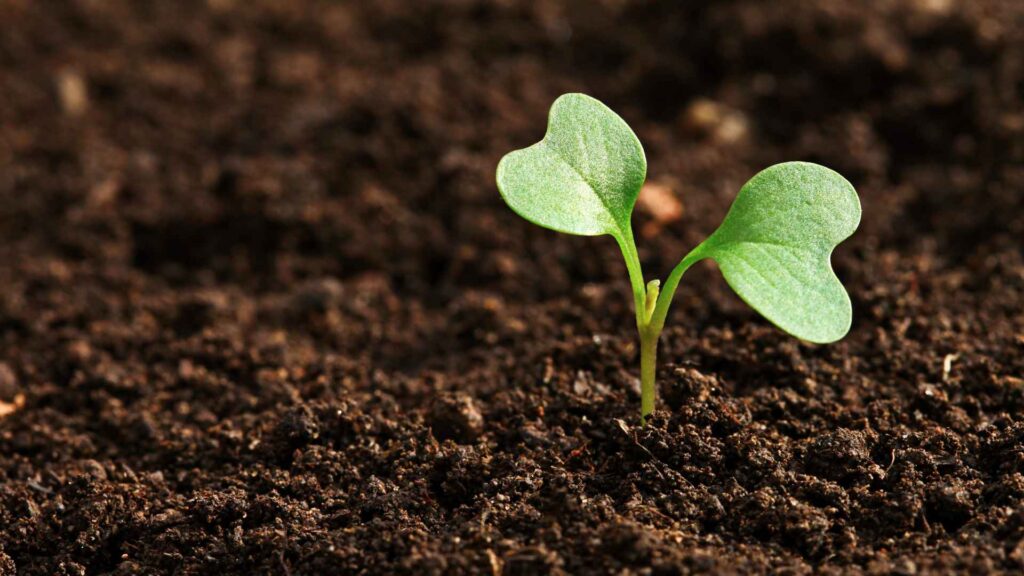
Applications of Plant Phenomics:
Genetic Phenomics: Genetic Phenomics aims to link genetic variations with phenotypic traits. It involves the identification and characterization of genetic markers associated with specific phenotypic traits using techniques such as genome-wide association studies (GWAS) and quantitative trait locus (QTL) analysis. Genetic Phenomics helps in understanding the genetic basis of plant phenotypes and facilitates targeted breeding efforts.
Phenomics of Stress Responses: This branch of plant Phenomics focuses on studying plant responses to abiotic stresses, such as drought, heat, salinity, and cold. It involves the measurement and analysis of traits associated with stress tolerance, such as leaf wilting, chlorophyll content, osmotic adjustment, and antioxidant activity. Understanding stress responses at the phenotypic level helps identify genetic markers for breeding stress-tolerant crop varieties.
Crop Improvement: Plant Phenomics plays a vital role in crop improvement programs by providing valuable insights into the genetic basis of desirable traits. By understanding the relationships between genes and phenotypes, breeders can develop crop varieties with improved yield, disease resistance, and tolerance to abiotic stresses. Phenomics also contributes to precision agriculture, where farmers can optimize resource allocation based on real-time information about plant health and growth.
Developmental Phenomics: Developmental Phenomics aims to understand the processes and mechanisms involved in plant development, from seed germination to flowering and fruiting. It involves the measurement and analysis of traits related to plant growth rates, leaf emergence, flowering time, fruit set, and seed production. Developmental Phenomics helps uncover genetic factors that influence developmental processes and crop yield.
Biostimulants and nutrients: The development, growth, and yields of plants are influenced by the presence of fertilizers, biostimulants, microorganisms, drugs, and plant protection products. Finding the ideal concentration for these various treatments, along with considering the watering schedule (especially under drought conditions), poses a significant challenge both in terms of agronomy and the environment. One such challenge lies in effectively applying fertilizers to optimize plant performance, as excessive fertilization can lead to soil and water pollution in nearby bodies of water.
Climate Change Adaptation: As climate change poses significant challenges to global food security, plant Phenomics offers a valuable tool to develop crops that are more resilient to changing environmental conditions. By studying the responses of plants to elevated temperatures, drought, and increased CO2 levels, researchers can identify genetic traits associated with adaptation and design strategies for crop improvement in a changing climate.
Challenges and Future Directions: While plant Phenomics holds great promise, it also faces several challenges. Standardization of phenotyping protocols, data integration, and analysis methods are crucial for ensuring the reproducibility and comparability of results. Additionally, the vast amount of data generated by high-throughput phenotyping requires advanced computational tools and machine learning algorithms for efficient data processing and analysis.
How PlantArray measures plant Phenomics?
We at Plant -Ditech, we specialize in plant Phenomics, offering advanced solutions and technologies to study and analyze plant traits. Our flagship product, PlantArray, is an innovative high-throughput phenotyping platform and data analysis to provide comprehensive insights into plant growth and development.
Plant Phenomics, as mentioned earlier, focuses on the measurement, analysis, and interpretation of plant traits at the whole-plant level. It plays a crucial role in advancing our understanding of plant biology, improving crop productivity, and developing resilient crops. We at Plant-DiTech, recognizes the significance of plant Phenomics and has developed PlantArray as a powerful tool to accelerate research in this field.
The PlantArray is designed to capture detailed information about plant phenotypes using multi-sensor physiological phenotyping gravimetric platform to capture various plant characteristics, including morphological, physiological, and biochemical traits. The use of our system allows to comprehensive assessment of plant performance and responses to environmental changes.
In addition to the PlantArray system Plant-DiTech’s SPAC (Soil-Plant-Atmosphere-Continuum) Analytics is cloud-based software performs real-time statistics, analysis and productivity prediction.
SPAC-Analytics enables agro-researchers to process input from multiple sensors and sources, and provide a statistical and graphic representation of any correlations from various growth and productivity traits, together with environmental parameters (stress included). The output is a detailed performance analysis based on advanced statistical tools of the plant population and the treatment responses. The data is retrieved automatically and continuously from large arrays of plant samples over any period of a growth cycle. The software allows you to run real-time multiple analysis during and following the experiment, using huge amounts of real-time data that are impossible to process manually.
The PlantArray system offers a superior alternative to visual measurements when assessing plant traits due to its advanced physiological measures. While visual assessments rely on the plant growing and take time, physiological measurements provide objective and accurate data in real time. The PlantArray system utilizes cutting-edge technology to monitor parameters such as biomass, stomata activity, and transpiration rates, providing a comprehensive understanding of plant health and performance. These physiological measures offer insights into plant stress levels, nutrient deficiencies, and disease susceptibility that may not be apparent through visual observation alone. Moreover, the PlantArray system enables real-time and non-destructive monitoring, allowing for continuous assessment of plant traits throughout their growth cycle. By relying on physiological measurements, the PlantArray system provides researchers with precise and reliable data, leading to more informed decision-making and improved plant management practices.

